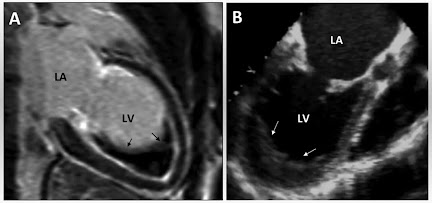Name :- Nucleus (Nucleus was first described by Robert Brown in 1831, and it's material stained by the basic dyes was given the name chromatin by Flemming.)
Properties :
- It is the largest cellular organelle.
- Generally located in the center of the cell but it may vary in some cells.
- It's diameter is about 10µ to 22µ.
- Mostly it is spherical in shape but it may vary in some cells.
- Nucleus occupies about 10% of total volume of the cell.
- It is present in all the cells in the body except RBCs.
- The cells with nucleus called eukaryotes and without nucleus called prokaryotes.
- Presence of nucleus is necessary for cell division.
- Most of the cells have only one nucleus called uninucleated cells.
- Few types of cells like skeletal muscle have many nuclei called multinucleated cells.
- Nuclear membrane
- Major components like nucleoplasm, chromatin, chromosomes and nucleolus.
- NM is double layered membrane called nuclear envelope, separates the nucleus from the cytoplasm.
- NM is porous in nature, which allows the nucleoplasm to communicate with the cytoplasm.
- Pores (diameter - 80-100 nm) of the NM are lined by protein molecules (after attachment of protein molecules, pores diameter may decrease 7-9 nm).
- Small molecules and ions move through the pores by passive diffusion, while large molecules such as RNAs and proteins pass through the selectively active transport.
- Outer membrane of NM is continue with membrane of endoplasmic reticulum (ER).
- The space between two layered of NM is continue with the lumen of the ER.
2. Major Components : Such as nucleoplasm, chromatin, chromosomes and nucleolus ....
Nucleoplasm :
- Nucleoplasm is a highly viscous fluid similar to cytoplasm.
- It surrounds chromatin and nucleolus.
- It contains nuclear matrix (dense fibrillar network of protein) and many substances such as nucleotides, enzymes and hyaloplasm (soluble liquid part of nucleoplasm).
- Nuclear matrix forms the structural framework for organizing chromatin.
Chromatin :
- Chromatin is a thread like material referred as DNA-histone complex or complex of DNA, proteins (histones) and some RNA. (A chain of nucleosomes)
- DNA is a double helix which wraps around the central core of eight histone molecules to form the fundamental packing unit of chromatin called nucleosome. (Eight histones wrapped by double helix DNA)
- Nucleosomes are packed together tightly with the help of histone molecule to form a chromatin fiber.
- Just before cell division, the chromatin condenses to form a pair of chromatids that constitutes a chromosome.
- In the cell that are not dividing, the chromatin appears as a diffuse granular mass.
Chromosomes :
- Chromosome is the rod-shaped nuclear structure that carries a complete blueprint of all the hereditary characteristics of that species.
- Each chromosome is a long molecule of DNA (contains many genes) that is coiled together with several proteins.
- Normally, the chromosomes are not visible in the nucleus under microscope while it visible (because DNA more tightly packed just before cell division) only during cell division.
- All the dividing cells of the body except reproductive cells contain 23 pairs of chromosomes.
- Each pair consists of one chromosome inherited from father and one from mother.
- The cells with 23 pairs of chromosomes are called diploid cells. The cells with 23 single chromosomes called haploid cells like reproductive cells also called for this gametes or sex cells.
Nucleolus (pleural - nucleoli) :
- Nucleolus is a small, round granular structure of the nucleus.
- Each nucleus contain one or more nucleoli.
- Nucleoli are quite prominent in cells that synthesize large amount of protein like muscle and liver cells.
- Nucleoli disperse and disappear during cell division and reorganize once new cells are formed.
- The nucleolus contains RNA and some proteins which are similar to those found in ribosomes.
- The RNA is synthesized by five different pairs of chromosomes and stored in nucleolus. Later, it condensed to form sub-units of ribosomes. All the sub-units are transported from nucleolus to cytoplasm through pores of the nuclear membrane.
Functions Of Nucleus :
- Control of the all activities of the cell such as metabolism, protein synthesis, growth and reproduction (cell division).
- Synthesis of RNA.
- Formation of sub-units of ribosomes.
- Sending genetic instruction to the cytoplasm for protein synthesis through messenger RNA (mRNA).
- Control of the cell division through genes.
- Storage of hereditary information (in genes) and transformation of this information from one generation of the species to the next.
Similar Posts :








No comments:
Post a Comment
Please do not enter any spam link in the comment box